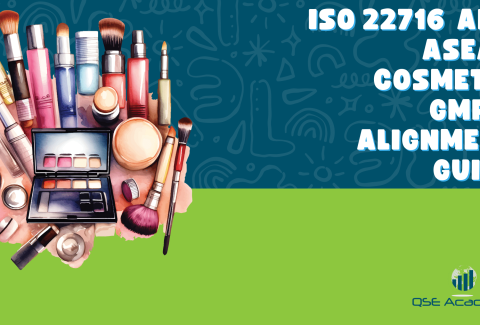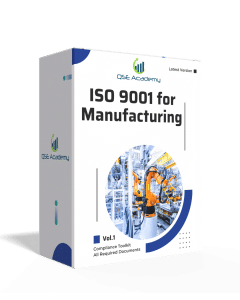GMP Compliance and Labeling for Cosmetics
Last Updated on October 24, 2025 by Hafsa J.
GMP Compliance and Labeling for Cosmetics
If you’re in the cosmetics business, you’ve probably heard about GMP compliance—and for good reason. It’s the foundation for ensuring that the products you create are safe, consistent, and high-quality. But what does GMP compliance really mean, and how does it fit into your manufacturing and labeling processes? Let’s break it down together.
Understanding GMP Standards
First things first, GMP stands for Good Manufacturing Practices. These are a set of guidelines that govern everything from how your products are made to how they’re labeled and packaged. In simple terms, GMP compliance ensures that your processes are consistent, your facilities are clean, and your products are safe for consumers.
Think of GMP compliance as a safety net. It’s there to catch any potential issues—whether it’s contamination during production or missing information on a label—before they reach your customers. And in an industry like cosmetics, where products are applied directly to the skin, this level of care is non-negotiable.
Why GMP Compliance is Essential for Labeling
When we talk about GMP compliance, labeling plays a much bigger role than you might expect. Labels aren’t just about branding; they’re also a critical tool for communicating important information to your customers. From ingredient lists to safety warnings, everything on your label must be accurate, clear, and compliant with regulations.
Here’s why it matters:
- Safety: A properly labeled product ensures that consumers know exactly what’s in it, helping them avoid allergens or irritants.
- Compliance: Many countries have strict labeling requirements as part of their GMP standards. If your labels don’t meet these requirements, your products could be pulled from shelves.
- Trust: Accurate and professional labeling builds trust with your customers. When people see a well-labeled product, they’re more likely to believe in its quality and safety.
GMP compliance isn’t just about making your products look good—it’s about doing the right thing for your customers and your business. And labeling is a huge part of that equation. Ready to explore the key requirements for GMP-compliant labels? Let’s dive into the details in the next section!
Key Labeling Requirements Under GMP Compliance
When it comes to GMP compliance, labeling isn’t just an afterthought—it’s a critical part of the process. A compliant label does more than make your product look professional; it communicates essential information to customers, regulators, and even your own team. Let’s walk through the key labeling requirements to ensure your cosmetic products meet GMP compliance standards.
Product Identification
The first step in creating a GMP-compliant label is ensuring clear product identification. Think about it: your label should leave no doubt about what’s inside the packaging. This includes:
- Product Name and Description: Clearly state what the product is (e.g., “Hydrating Face Cream”) and its intended use.
- Batch or Lot Number: This ensures traceability, allowing you to track specific batches in case of quality issues.
- Net Quantity: Accurately display the amount of product, whether it’s in grams, milliliters, or ounces.
These details are essential for both GMP compliance and building trust with your customers.
Ingredient Listing
Transparency is everything when it comes to ingredients. Under GMP compliance, you’re required to list every ingredient in descending order of weight, using standardized names. For cosmetics, this often means following the International Nomenclature of Cosmetic Ingredients (INCI).
Why is this important?
- Customer Safety: It helps consumers identify allergens or ingredients they prefer to avoid.
- Regulatory Compliance: Many regions, including the EU and the US, mandate accurate ingredient labeling as part of GMP standards.
Pro Tip: Double-check for consistency between your product formula and the ingredient list to avoid costly mistakes.
Allergen Warnings and Safety Information
A major part of GMP compliance is ensuring that your products are safe for use. This includes adding any necessary warnings to your label, such as:
- “Avoid contact with eyes.”
- “For external use only.”
- Allergen disclosures for known irritants, like fragrances or essential oils.
These warnings not only protect customers but also demonstrate your commitment to transparency and safety.
Language and Regional Regulations
When selling in multiple markets, GMP compliance means tailoring your labels to meet local requirements. For example:
- Language: Labels must be in the official language(s) of the country where the product is sold.
- Regulatory Symbols: Some regions require specific symbols, such as the “period after opening” symbol indicating shelf life.
Failing to meet regional requirements can lead to regulatory issues, so it’s worth investing the time to get this right.
By addressing these key areas, you’re not just meeting GMP compliance requirements—you’re creating labels that build trust, enhance safety, and support your brand’s reputation. Ready to see how compliance impacts your overall labeling practices? Let’s dive deeper in the next section!
How GMP Compliance Impacts Labeling Practices
If you’re wondering how GMP compliance influences the way you label your cosmetic products, the answer is simple: it impacts every single detail. From the words you choose to the layout of your label, GMP compliance ensures that your labeling isn’t just attractive—it’s also accurate, informative, and consistent. Let’s break down how it works.
Consistency and Accuracy
Consistency is one of the pillars of GMP compliance, and labeling is no exception. Your labels must match your product formulations exactly—no shortcuts or guesswork allowed. For instance:
- Ingredient Accuracy: The ingredient list on your label must reflect the exact formula used in the product. If even one component is missing or mislabeled, it could lead to compliance issues or even product recalls.
- Uniform Presentation: Labels for the same product across different batches should look identical, down to the smallest detail. This ensures customers always know what to expect.
Consistency doesn’t just protect your business from mistakes—it also builds trust with your customers.
Documentation and Recordkeeping
GMP compliance doesn’t stop at creating a label. You also need to document every step of the labeling process to ensure traceability. Why? Because accurate records can save the day during an audit or if an issue arises. Here’s what to keep track of:
- Label Templates: Save copies of every label design to show auditors that your products meet GMP standards.
- Change Logs: Document any updates or revisions to your labels, including the reason for the change.
- Batch Records: Include the specific label used for each batch in your production records.
By staying organized, you make it easier to demonstrate your commitment to GMP compliance.
Preventing Labeling Errors
Even small labeling mistakes can have big consequences, from customer complaints to regulatory fines. Here’s how GMP compliance helps you avoid common pitfalls:
- Double-Check Information: Ensure that every detail—ingredient lists, safety warnings, and batch numbers—is correct before printing labels.
- Implement Quality Control: Have a dedicated team or system in place to review labels for accuracy before they’re applied to products.
- Standardize Processes: Use a clear, repeatable process for creating and approving labels to minimize errors.
Think of your label as your product’s first impression. When it’s clear, accurate, and professional, it sets the tone for a positive customer experience.
Adapting to Regulatory Changes
GMP compliance isn’t a one-time effort—it’s an ongoing commitment. Regulations around labeling can change, and staying compliant means being proactive about updates. For example:
- If new rules require additional allergen warnings, you’ll need to update your labels promptly.
- Selling in a new region might mean adapting to local labeling standards, like including specific symbols or translating text into another language.
By keeping your labeling practices flexible and up-to-date, you’ll stay ahead of the game and maintain GMP compliance.
When you follow GMP compliance in your labeling practices, you’re not just checking a regulatory box—you’re creating a system that protects your customers, builds trust, and strengthens your brand. Ready to tackle the challenges of labeling compliance? Let’s look at the hurdles you might face and how to overcome them in the next section!
Challenges in Achieving GMP Compliance for Labeling
Let’s be real—meeting GMP compliance standards for labeling isn’t always smooth sailing. From navigating complex regulations to avoiding small but costly errors, there are plenty of hurdles that cosmetic manufacturers can face. The good news? With a little preparation and the right approach, these challenges are totally manageable. Let’s explore the most common issues and how to overcome them.
1. Common Labeling Mistakes
Mistakes on labels can happen to anyone, but they’re especially problematic when GMP compliance is involved. Even minor errors can lead to non-compliance, customer complaints, or regulatory fines. Some of the most frequent mistakes include:
- Missing Information: Forgetting to include key details like batch numbers, net weight, or allergen warnings.
- Ingredient Mismatch: Listing ingredients incorrectly or leaving out a component entirely.
- Misprints or Typos: Errors in spelling, measurements, or symbols can confuse customers and fail to meet legal requirements.
How to Solve It:
- Double-check every label against GMP standards before printing.
- Use automated systems or software to reduce human error.
- Establish a quality control process where multiple people review labels before approval.
One of the trickiest parts of achieving GMP compliance for labeling is dealing with different regulations in different regions. What works for one country might not meet the requirements in another. For example:
- In the EU, you need to follow strict ingredient disclosure rules under ISO 22716 standards.
- In the US, the FDA has its own unique requirements for labeling and safety warnings.
- Other regions may require text in specific languages or symbols that aren’t common elsewhere.
How to Solve It:
- Research the labeling regulations for every region where you plan to sell your products.
- Work with regulatory consultants or experts who specialize in GMP compliance for cosmetics.
- Use flexible label templates that can be easily adapted for different markets.
3. Keeping Up with Regulatory Updates
Regulations for cosmetic labeling aren’t set in stone—they evolve over time. Staying informed about changes is a key part of maintaining GMP compliance. But with so many moving parts, it’s easy to feel overwhelmed.
How to Solve It:
- Subscribe to industry newsletters or join trade associations to stay updated on regulatory changes.
- Conduct regular reviews of your labels to ensure they still meet current standards.
- Designate a team member or hire a consultant to monitor and implement updates as needed.
4. Managing Costs and Time
Updating labels to meet GMP compliance can require both time and money, especially if changes involve redesigning templates, reprinting materials, or adapting to new markets. These challenges can feel particularly heavy for smaller businesses.
How to Solve It:
- Prioritize cost-effective solutions like digital label designs that can be adjusted without starting from scratch.
- Plan updates well in advance to avoid last-minute rush fees or production delays.
- Explore partnerships with printing companies that specialize in GMP-compliant labeling to streamline the process.
5. Ensuring Team Alignment
Your team plays a critical role in ensuring GMP compliance, but lack of training or communication can lead to labeling errors. For example, someone might use an outdated template or forget to include a required detail.
How to Solve It:
- Train all relevant employees on GMP labeling standards and procedures.
- Use clear Standard Operating Procedures (SOPs) that outline how to create, approve, and update labels.
- Foster open communication so team members feel comfortable asking questions or raising concerns.
Achieving GMP compliance for labeling might have its challenges, but with a proactive approach, you can tackle them head-on. The key is to focus on organization, training, and staying informed—because when your labels are accurate, clear, and compliant, you’re setting your brand up for success. Ready to learn some best practices for GMP-compliant labeling? Let’s dive into that next!
Best Practices for GMP-Compliant Labeling
Now that we’ve covered the challenges of GMP compliance for labeling, let’s focus on how to get it right. By following some best practices, you can ensure your cosmetic product labels meet regulatory standards, boost customer trust, and avoid costly mistakes. Here are the key steps to mastering GMP-compliant labeling.
1. Develop a Clear Labeling SOP
A Standard Operating Procedure (SOP) is like a roadmap for your team. When it comes to GMP compliance, having a detailed SOP for labeling is essential. It ensures everyone follows the same process, reducing errors and inconsistencies.
What to include in your SOP:
- Steps for creating, reviewing, and approving labels.
- A checklist of mandatory elements (e.g., product name, ingredients, batch number).
- Guidelines for handling updates and regulatory changes.
An SOP not only keeps your team aligned but also serves as a useful reference during audits.
2. Invest in Quality Control
When it comes to labeling, small mistakes can have big consequences. That’s why quality control (QC) should be a top priority. A robust QC process ensures your labels are accurate, consistent, and fully aligned with GMP compliance standards.
Here’s how to do it:
- Assign a dedicated team or individual to review every label before production.
- Use tools like barcode scanners to verify batch numbers and product details.
- Perform periodic audits to catch and fix recurring issues.
Think of QC as your safety net—it catches errors before they become costly problems.
3. Collaborate with Experts
GMP compliance can be tricky, especially when it comes to meeting labeling regulations in multiple regions. Working with industry experts can save you time and stress.
Who to collaborate with:
- Regulatory Consultants: They can help you navigate complex laws and ensure your labels meet local requirements.
- Labeling Specialists: Professionals who understand the technical side of label design and printing.
- Printing Companies: Partner with printers experienced in GMP-compliant labeling to streamline production.
Remember, outsourcing certain tasks doesn’t mean giving up control—it’s about getting the right support.
4. Standardize Label Templates
A standardized label template is a simple but effective tool for achieving GMP compliance. By using the same layout and structure across all your products, you reduce the risk of missing key information.
Best practices for templates:
- Include placeholders for mandatory fields like ingredient lists and safety warnings.
- Use consistent fonts, sizes, and formatting to make labels easy to read.
- Keep templates updated with the latest regulatory requirements.
Standardized templates save time, improve accuracy, and give your labels a professional look.
5. Leverage Technology
Technology can make a world of difference when it comes to GMP compliance. From design to tracking, the right tools can help you stay organized and efficient.
Helpful tools to consider:
- Labeling Software: Automate label design and ensure all required elements are included.
- Digital Asset Management Systems: Store and manage your label templates, images, and records in one place.
- Regulatory Databases: Use online platforms to stay updated on global labeling requirements.
Technology simplifies the process and helps you stay one step ahead of compliance challenges.
6. Keep Your Team Informed
Your team plays a vital role in ensuring GMP compliance for labeling. Regular training keeps everyone on the same page and helps prevent mistakes.
How to keep your team informed:
- Schedule regular training sessions on GMP labeling requirements.
- Share updates about regulatory changes and what they mean for your labels.
- Encourage open communication so team members can flag potential issues early.
An informed team is your greatest asset when it comes to maintaining compliance.
By following these best practices, you’ll not only meet GMP compliance standards but also create a smoother, more efficient labeling process. Ready to explore how technology can take your compliance efforts to the next level? Let’s dive into the role of tech in the next section!
The Role of Technology in Ensuring GMP Compliance for Labeling
Let’s face it—navigating GMP compliance for labeling can feel like juggling a million details at once. From keeping up with regulatory changes to ensuring your labels are error-free, there’s a lot to manage. That’s where technology comes in. With the right tools, you can streamline your labeling process, minimize mistakes, and stay ahead of compliance requirements. Let’s explore how technology can make a difference.
1. Automated Labeling Systems
Gone are the days of manually designing and printing labels. Automated labeling systems are a game-changer for ensuring GMP compliance. These systems are designed to handle repetitive tasks with precision, reducing the risk of human error.
How they help:
- Consistency: Automated systems ensure that labels for every batch are uniform and accurate.
- Efficiency: Generate labels faster, even for large-scale production.
- Error Reduction: Built-in checks flag missing or incorrect information before printing.
By taking the guesswork out of labeling, automation lets you focus on other areas of your business.
2. Digital Recordkeeping
When it comes to GMP compliance, keeping detailed records is just as important as creating accurate labels. Technology makes it easier to store, organize, and retrieve these records whenever you need them.
Benefits of digital recordkeeping:
- Traceability: Track every change made to a label, including who made it and when.
- Audit Preparedness: Quickly access documentation during inspections or audits.
- Scalability: Manage records for multiple products and markets without the hassle of physical files.
Platforms like cloud-based storage or labeling software with recordkeeping features can save you time and space while improving your compliance efforts.
3. Regulatory Compliance Databases
One of the biggest challenges in maintaining GMP compliance is keeping up with ever-changing labeling regulations. Regulatory compliance databases are your secret weapon for staying informed.
How they work:
- Centralized Information: Access the latest requirements for multiple regions in one place.
- Automatic Alerts: Get notified about updates that could impact your labels.
- Guidance Tools: Use templates and examples tailored to specific regulatory frameworks.
These tools ensure you’re always ahead of the curve, no matter where you’re selling your products.
4. Quality Control Software
Quality control is non-negotiable when it comes to GMP compliance. Technology can make the QC process more thorough and efficient, ensuring your labels meet all requirements.
What QC software can do:
- Automated Inspections: Scan labels for missing or incorrect information.
- Real-Time Feedback: Flag issues immediately, so they can be corrected before production.
- Reporting: Generate reports on quality checks to support compliance documentation.
By integrating QC software into your labeling process, you can catch errors early and maintain consistent quality.
5. Collaboration and Workflow Tools
Creating and approving labels often involves multiple team members, from designers to compliance officers. Collaboration tools ensure everyone stays aligned and the process runs smoothly.
Examples of helpful tools:
- Project Management Software: Track tasks, deadlines, and approvals in one place.
- Version Control Systems: Keep track of label revisions and ensure everyone is working on the latest version.
- Feedback Platforms: Make it easy for team members to review and comment on label drafts.
When your team is equipped with the right tools, meeting GMP compliance becomes a team effort—and a much less stressful one.
6. Integrating Technology into Your Workflow
The key to success with technology is choosing the tools that best fit your business needs. Start small—maybe with an automated labeling system or digital recordkeeping—and expand as your operations grow.
Pro Tips:
- Look for tools that integrate with your existing systems.
- Train your team on how to use the technology effectively.
- Regularly review your tech stack to ensure it’s meeting your compliance goals.
Technology isn’t just a nice-to-have—it’s a must-have for ensuring GMP compliance in today’s fast-paced cosmetics industry. By leveraging the right tools, you can simplify your processes, reduce errors, and keep your labeling practices ahead of the curve. Ready to wrap things up? Let’s summarize the key takeaways in the next section!
Conclusion: Why GMP Compliance Matters for Cosmetic Labeling
So, we’ve covered a lot about GMP compliance and how it plays a crucial role in cosmetic labeling. From understanding the basic requirements to leveraging technology and avoiding common pitfalls, it’s clear that compliance is more than just a box to tick—it’s a key ingredient for success in the cosmetics industry. Let’s recap why it matters.
Protecting Consumers and Building Trust
At its core, GMP compliance ensures your products are safe for your customers. Proper labeling provides vital information like ingredients, warnings, and usage instructions, helping consumers make informed decisions. When your labels are accurate and compliant, you build trust—something every brand needs to thrive.
Meeting Legal and Regulatory Standards
Regulations can be tricky, but GMP compliance ensures you’re always on the right side of the law. Whether you’re navigating regional variations or keeping up with new requirements, compliant labeling keeps your products on shelves and your business running smoothly. It’s your ticket to entering new markets and avoiding legal headaches.
Streamlining Operations with Technology
We’ve seen how technology can simplify the labeling process, from automated systems to digital recordkeeping. These tools not only help you maintain GMP compliance but also save time, reduce errors, and improve overall efficiency. By embracing tech, you’re setting your business up for long-term success.
Fostering a Culture of Excellence
When your team understands and values GMP compliance, it creates a culture of excellence within your business. From clear SOPs to regular training, focusing on compliance ensures that every product you make meets the highest standards.
Your Next Steps
If you’re just starting your journey with GMP compliance, don’t worry—it’s a process, and you don’t have to tackle it all at once. Begin by auditing your current labeling practices, creating a checklist, and investing in tools that make compliance easier. Small, consistent steps will get you where you need to be.
And remember, you’re not just meeting requirements—you’re building a brand that stands for quality, safety, and trust. Ready to make GMP compliance a cornerstone of your business? Let’s do this!
Whether it’s ISO 9001, ISO 22000, or the cosmetics-focused ISO 22716, I’ve spent my career I’m not here to call myself an expert—I prefer “enthusiast” because I truly love what I do. When I’m not writing about standards, you’ll probably find me playing Piano 🎹, connecting with people, or diving into my next big project💫. I’m an engineer specialized in the food and agricultural industry
make ISO standards less intimidating and more approachable for everyone.
turning complex jargon into clear, actionable steps that businesses can actually use.
There’s something incredibly rewarding about helping people navigate food safety and quality management systems
in a way that feels simple, practical, and even enjoyable.
I have a Master’s in QHSE management and over 12 years of experience as a Quality Manager
I’ve helped more than 15 companies implement ISO 9001, ISO 22000, ISO 22716, GMP, and other standards
My clients include food producers, cosmetics manufacturers, laboratories, and service companies
I believe quality systems should be simple, useful, and efficient.
Looking for More Resources on ISO 22716?
If you found this article helpful, explore our premium resources designed to help you achieve ISO 22716 certification efficiently:
- Complete Documentation Package for ISO/IEC 22716 2017: Get all the essential templates and documents you need for fast, easy implementation.
- Online Course on ISO/IEC 22716 2017 : Enroll in our comprehensive training to master the key concepts and practical steps toward certification.
- ISO/IEC 22716 2017 Checklist: Download our detailed checklist to ensure you’ve covered every step of the process.
These resources are tailored to meet your needs and ensure a smooth certification journey. Explore them today and get one step closer to success!











